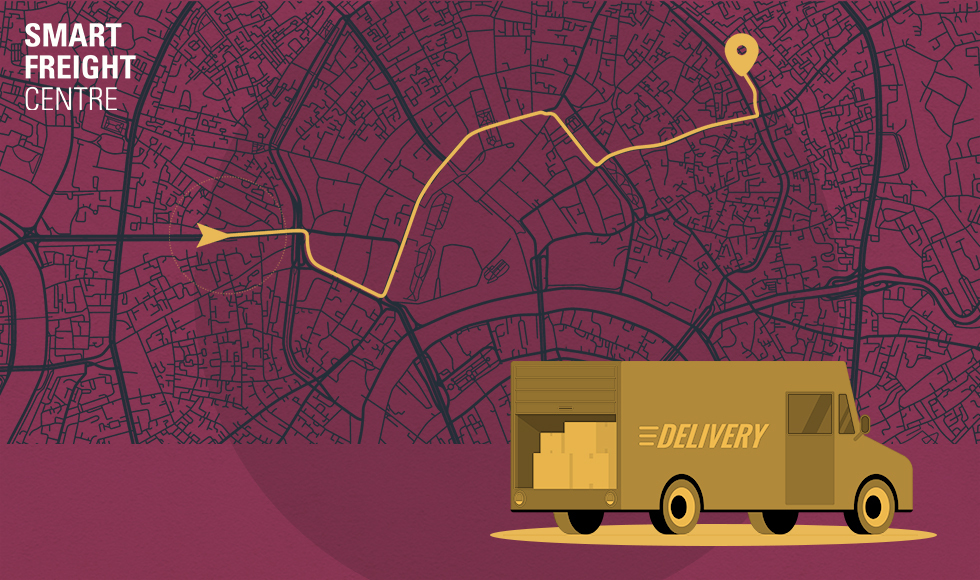Finding sustainable solutions to minimize the impact of local deliveries in communities

New research looks at the social, environmental, and economic impacts to local communities from e-commerce deliveries.
BY Izabela Shubair, DeGroote School of Business Contributor
March 7, 2022
After patiently waiting at the bus stop, you board the city bus. But rather than finding a seat, you punch in a combination that opens a locker. It contains one of your online orders. Mobile package lockers on city buses are one solution in a pertinent City Logistics for the Urban Economy (CLUE) research project. It aims to develop techniques for implementing sustainable ways to get your parcel from a transportation hub to its final destination — known in logistics as last-mile delivery.

Elkafi Hassini
The project is part of a larger research theme addressing new e-commerce delivery models. It focuses on creating data resources and analyses to assess trends in delivery demand resulting from e-commerce; their social, environmental, and economic impacts; and methods to reduce impacts.
With e-commerce shopping popularity soaring and understanding of delivery impact lacking, Elkafi Hassini, business professor of operations management, says the topic is particularly relevant.
“People want the best of both worlds: deliveries every day without traffic in their neighbourhoods,” says Hassini, lead on several e-commerce delivery model research projects.
He is also chair of the Smart Freight Centre (SFC) — a multi-university, multi-sector partnership tackling goods movement issues — of which CLUE is one major research project. “Part of this project’s method uses a survey. We’ll show residents a prototype and ask whether they will be interested in this technology. The idea is people who may be taking the bus and residents who live close to the bus stop can drop off and pick up their parcels. That has some interest from both transit and locker manufacturers.”
Because projects grouped under particular themes share commonalities, researchers share data sets to offer robust solutions. For example, another project Hassini is leading uses other projects’ survey data and Statistics Canada data to improve understanding of how increasing demand for e-commerce affects quality of life, safety, sustainability, and traffic movement efficiency in Greater Toronto and Hamilton Area (GTHA) neighbourhoods.
“Peel Region has noted that in some neighborhoods there are concerns that online deliveries are disrupting residents’ way of life,” Hassini explains. “To quantify this, we ran a survey, in 2020, to assess residents’ shopping behaviours and attitudes towards online shopping. We then looked at how do we resolve some of their issues? That’s where solutions like mobile lockers come in. We’re now in discussions with Transport Canada to generalize the survey across Canada.”
Hassini and his fellow CLUE researchers introduced their current work at the Smart Freight Symposium in November. Hosted by DeGroote, the virtual event featured a day of industry-led presentations. A second day was dedicated to research presentations by graduate students and postdoctoral fellows of SFC partner institutions, Ryerson University, McMaster University, University of Toronto, and York University.
Matt Roorda, a University of Toronto Civil Engineering professor and the university’s Canada Research Chair in Freight Transportation and Logistics, was one of the CLUE researchers who presented an overview of some of his current work. Similar to Hassini’s project, it examines impacts of deliveries. But rather than investigating home deliveries, Roorda is focusing on off-peak freight deliveries.
Municipal by-laws traditionally restricted many freight deliveries between 7 p.m. and 6 a.m. In March 2020, in response to COVID-19, the Ontario Government announced the Municipal Emergency Act 2020. It relaxed noise by-laws for goods delivery in the province. Roorda’s project assesses the benefits and impacts of off-peak deliveries during and after the pandemic, based on performance indicators such as supply chain flexibility, travel speed, delivery delay, emissions, and noise impacts.
“It is about encouraging and finding ways to allow businesses to move goods at night or in the evening or early morning,” says Roorda, who is also the SFC’s Scientific Advisory Committee chair. “There are several benefits. It reduces peak-hour congestion. It can improve the operations of businesses because they can travel faster. There’s greenhouse gas emission reductions when trucks spend less time idling. There are also potential health benefits when people are less likely to be breathing in fumes from diesel engines because at night there are fewer people on the streets.”
Roorda’s research is also an example of the SFC’s collaborative network. It’s establishing and evaluating a GTHA off-peak delivery analysis program in partnership with member-companies of the Retail Council of Canada, the City of Toronto, and the Regional Municipality of York and Peel Regions. Data analysis is being conducted using Walmart, Loblaws, and LCBO logistics databases as well as community surveys and collision analysis. Analysis of performance indicators is being undertaken during and after COVID-19.
“We’re trying to provide a resource document (to industry) that can show some of the best practices to minimize community impacts,” says Roorda. “We’re also informing government agencies responsible for developing policies. It’s one of the big emphases of our research collaborations to maximize the impact we can have on the freight industry and other jurisdictions.”



